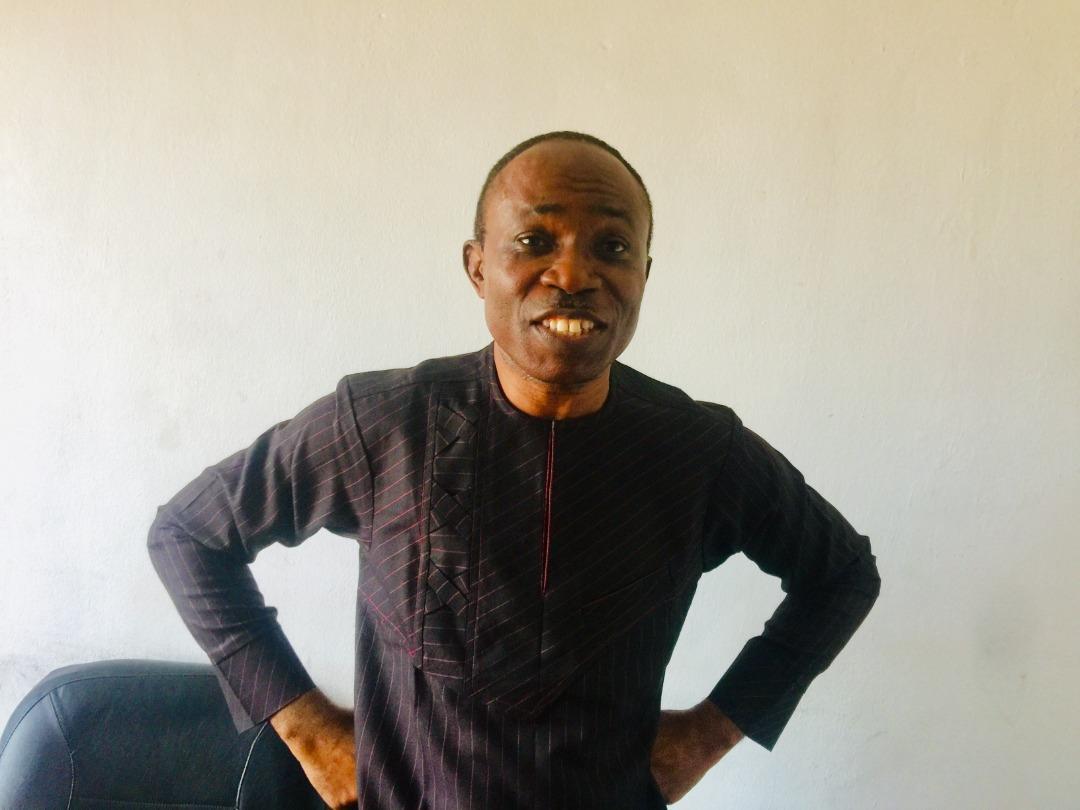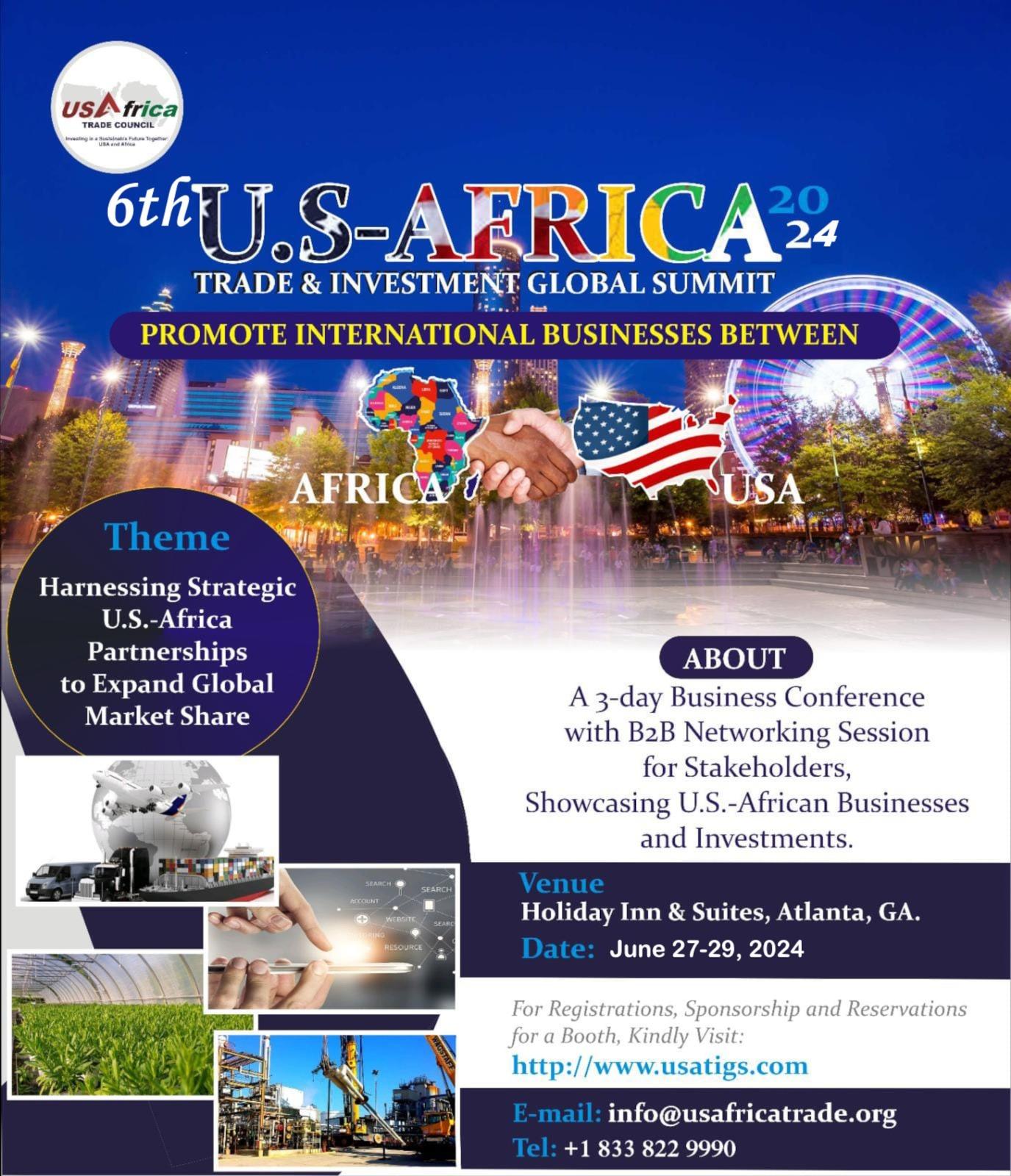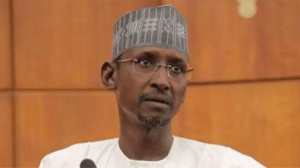Every film I (had) made got pirated by the marketers I gave them to for distribution.
I would borrow money to produce a film, buy the empty cassettes, dub the materials into the cassettes, print packets for the cassettes, and give the marketers to sell. On my return for my portion of the agreed proceeds, to defray my cost and have some profits and make returns on investments to my investors, the marketer would take me to his warehouse where the packets were stacked, and all the copies delivered to him would be there. All. Because we would count, one by one.
So, what happened?
What usually happened was that the marketer would take your film to mass production studios, the packet to printers, and mass production of multitude of copies of the film and packets would be done. That is the version that is sold in the market. So, of course, the marketer would tell you that your film has not moved.
Let me start with my experience with Living in Bondage, which was released in 1992. My sponsor/partner reneged on the agreement we had of sharing the proceeds fifty-fifty after he would have recouped his investments. It was not a written agreement.
All I got from Living in Bondage was three thousand five hundred naira. It was not payment from the sales (but) allowances that I was collecting from him for the logistics when I was producing that movie.
I was a novice. I was a hungry boy from the streets who did not have anyone to plead his cause, who did not have any idea or experience in business or in filmmaking, because (this home-movie business) had not been done before….(I was dealing with a) more experienced (businessman) who saw every loophole and explored them.
That movie (must have netted at least) twenty million naira, and I did not get a dime….

(All I got was fame). I was so popular that people wanted to stone me for luring Andy into the occult to kill his beautiful wife, believing that, in real life, I was a cultist. I could not board public transport. I needed to have some semblance of security, rent a good apartment, instead of being a squatter (that I then was).
So, after one month of the release of Living in Bondage, I decided to call the bluff of my sponsor/partner, after finishing the script for Part Two, and told him that if I was not given money or some part of the money (I would not hand the script to him).
He said that when we finished Part Two, he would give me the money (due to me). One of the staff advised me to collect what I could (upfront) and that he was sure that I would not get anything (again).
(What followed included accusations of theft, betrayals and all that).
I moved on to Circle of Doom. This time we had a written agreement prepared by (my partner’s) lawyer-brother, but which I could not enforce.
I got paid for the first fifteen thousand packets which I and (my fellow-actors shared) and nothing more, till tomorrow.
Ah.
My experience with Nneka, The Pretty Serpent (which I did with a different partner was no different). Worse of it was that the guys went around town boasting about how the film had made them rich.
These are not good stories I love to tell.
I decided that I was not going to do any more films. I (changed my mind) and, in 1995, made Brotherhood of Darkness, got four million five hundred thousand Naira from Orange Drugs Ia pharmaceutical company), and after production, gave the film to someone from the streets, thinking that I was (working with someone like me, but the outcome was even messier….). I was cheated again, and I told myself that it was enough. But I still went on to shoot one more movie, to put body and soul together. (You cannot blame me) this is also the only thing I know how to do.
I have borne the sufferings of a trailblazer with others taking the glory and reaping from my mistakes, correcting the mistakes and standing firm.
1996.
After First Lady Mrs Maryam Abacha returned from (the Fourth World Conference on Women: Action for Equality, Development and Peace) in Beijing, China, and they wanted to do some sort of women empowerment initiatives, and document a film, to help drive the narrative, I sent a proposal to (her office) to do a book and a film on the life and times of Queen Amina of Zaria, whom I think stands out when it comes to women empowerment. The proposal was accepted but the First Lady’s Office said they were not going to (fund it). Nollywood was still relatively new then. Nobody trusted anybody. They offered instead to give me letters which would open all the doors to wherever and whatever we needed to do the research – because there were several versions of the story of Queen Amina out there – to bring out the most acceptable story. I accepted the offer.
While I was waiting for the letters, I decided to do another film, that I could fall back on while travelling.
So, I did another film, titled When Flowers Turn Black. The experience here was even more horrendous. (Again, the details involve all sorts of accusations of crime). The film was dead (on arrival).
I concluded after this that it appears that my destiny was not in partnering with marketers because these people were not honest at all, and even if they were honest, it was best for me to do a film I could control up to the distribution.
I told myself that nobody would believe that I had been so popular without making any money.
Eventually the letter from the Office of the First Lady came. It was a letter introducing me to all the emirs and the Who’s Who in northern Nigeria, the dons, the museums, the traditional institutions. Everyone with history.
I got a researcher, and we began our journey.
The research was daunting. We did it up to 1998 or thereabouts. Then, (Head of State, General) Abacha died. Gen Abdulsalam Abubakar succeeded him. (Since I was dealing with the Office of the First Lady), I also tried to have a (working) relationship with the wife, Justice Fati Lami (rtd). She let me know that her husband’s tenure would be short and (it would be futile) to (get involved with) such a long-term project. She advised that we should be patient for whoever took over and she assured that she would do the necessary introductions, and indeed, she did. I must mention that the late Ambassador Segun Olusola was also helpful. He wrote letters to whomsoever he (had connections with).
We travelled everywhere there is history…on good, bad and hazardous roads. Oh, we travelled. From Dass to Kano to Bauchi to Jos to Ilorin to places in Kogi State to Suleja to Abuja….
We visited thirteen emirs.
(Truth is that) nobody really wanted to talk (to me) about the story of Amina. At a point, it looked like that there was a conspiracy against that woman. Even when I went to the Zazzau and Kano Chronicles to check the period that Amina reigned… the thirty-four years of her reign was absent. You would see where (the reign of) Bakwa of Turunku (King Nikatau), her father, ended, but you would not see (records) of another person reigning for another thirty-four years, until the next king came….
Then you would wonder whether some persons want her reign obliterated (from history).
It appeared that there were some fears that men did not want to tell the story of how a woman dominated or expanded or developed the far and vast Zazzau Empire which transcended (so many territories). Today, it is thirteen emirates, but it was way, way bigger than that, in those days, and she had (extensive) influence up to the northern parts of Africa.
For such a (powerful) woman (reported to have done such great) exploits, one would wonder why there is no monument anywhere in Nigeria named after her except one small statue at the entrance of the National Theatre, Iganmu, Lagos. And maybe the Amina Hall in some of Nigeria’s universities.
It does not matter how far people try to stop her name from being heard. At a point, people were beginning to talk about how she was supposedly wayward; that she would take men in, have sex with them overnight, and in the morning, kill them…but nobody is saying that Amina did all those things because there was the traditional system and culture of the people which resisted the rulership of a woman, and so, oftentimes, planted surrogates or what you can call enemies who purported to be lovers; and she would take them in and always found that they were armed and plotted certain booby-traps for her to be exterminated. Each time she discovered that, being a military strategist, knowing that any enemy you keep alive means that your life is in danger, she would (eliminate them). This continued up to a point when she said she would no longer marry. Then the talk of her being a hermaphrodite started…a lot of stories, but it was all because of the gender prejudices that men had. It was a period of complete female subjugation, a timeless season of wars and terror everywhere. For a woman to be equal to all men and hold her own was worrisome to a lot of people.
Back to our mission: when we presented our letter to some of the emirs and the custodians of history we met, they did not want to say ‘No’ to (General Sani) Abacha, but they were reluctant to tell me (and my researcher) all I wanted to know. They tried to dismiss us without saying it. In some cases, I would be asked to wait, that I would soon be seen, and it could take as long as seven days of waiting. Every morning, I would resume from my hotel to (start the waiting game). Sometimes I would be pressed and would not leave to (go and relieve myself, to avoid a situation) where I would be told that I was called, and I was out. You know that when you miss such an opportunity, you cannot say that you were not called, it would be that you were called but you were not available, and then who knows, you may not be called again.
I endured pains and kept faith.
I waited it out and became a nuisance in some of these palaces. I could wait three or four days with my researcher…we were eating and drinking with all the talakawas who came morning, afternoon, and night to eat in the palaces.
We could not penetrate some emirates no matter how much we tried. After waiting for some time for the (then) Emir of Kano, Alhaji Ado Bayero, he directed us to some historians…and that was how we got to (now late) Danmasanin Kano, Ambassador Yusuf Maitama Sule…. Same thing happened in Zaria…after waiting so many days, we were directed to the chief historian, (now late) Alhaji Ahmadu Fatika (Sarkin Fadan Zazzau and a minister in Nigeria’s First Republic) I was also referred to Alhaji Nuhu Bamalli (who was once Nigeria’s foreign minister), a literature specialist and the Magajin Garin Zazzau – his son, His Royal Highness Alhaji Ahmed Nuhu Bamalli is now the Emir of Zazzau – who talked with me for so many days, and gave me a handwritten recommendation on his letterhead which he said I could use to open any door anywhere I wanted. (That was a breakthrough on this journey). When the (John F) Kennedy Centre (for Performing Arts) came (into the picture – they gave me some money – through the assistance of Masoma African Foundation for The Arts led by Mrs Sylvia Bello (chairman) and Mrs Funke Akinyanju (Board Member) and two of their top artistic directors (Alicia B. Adams and another) travelled with me to all the emirates, the doors opened faster…even (one of two of the emirs became more relaxed). That was what the involvement of the Americans did, along the way.
Everything that could go bad during the research phase went bad. But I persevered.
In 2014, when the Federal Government rebased the Nigerian economy (from the base year of 1990 to 2010), and decided to support the Nollywood industry, I applied for a production grant, and this was approved. I used part of this funding to go for training at UCLA (University of California Los Angeles) where I had instructors such as Barbara Boyle, Joe Rosenberg, Neil Landau, Donald Martin and John W. Simmons. Martin remains my mentor, and he is a script consultant to Amina.
It was after I returned from UCLA that I began the groundwork for the production but I knew that the money was too little to do anything, but it was sufficient seed money until some other investors could come into play. I approached the Bank of Industry and applied for a loan. I was granted but it was still not going to be enough. There was a need for more investors.
Thereafter, I moved to Jos.
Why Jos?
Jos is a filmic topography. If you go to Jos, you can see the highs and the lows, the mountains and the valleys, the streams and the dams, the beautiful vegetation. The climate…everything speaks film. It was where I knew I would find equipment and technical hands who would help me craft the picture. If you go to a place in Jos called MOTNA (Museum of Traditional Nigerian Architecture) you would find a semblance of every tribe’s natural habitat in this country. It was at MOTNA that I found the ancient palace of Amina that I needed to recreate.
I was in Jos with a crew of 86 from Nollywood. I wanted to work with at least 1000 artistes from Kannywood (the Northern Nigeria/Hausa-language film industry). The essence of doing this was to close the gap between the north and the south when it comes to the creative divide. What is this creative divide? Northern artistes claim that they are not part of Nollywood. It means that whenever they produced a film, it would not cross into Nollywood, and when Nollywood produced films, they would not cross to the northern side. I do not know where this dichotomy came from. But do you know that if these two markets come together, we would have a big and vibrant industry and the impact would be huge on Nigeria’s economy. So, as a trailblazer, I decided to use this one story that is African, that is Nigerian, that is northern, told by a southerner, investigated and researched with a Yoruba person (Sola Ojewusi). It was going to be a cross-cultural production which would feed in (all the sides) and fully be a Nigerian production. I invited the artistes from the north and they came and for about three months we trained them – after auditioning – on how to ride horses, how to fight with swords on horsebacks and all that.
We built our sets…. At some point…they collapsed because of heavy rain. They were mud buildings. We started afresh. By October/November 2015, we had finished the sets, rehearsals and by early November, we began to shoot. We shot all through 8 February 2016. By the 11th of February, we paid everyone off, and left Jos.
Two of the biggest challenges that Nollywood has had during production are sound and picture. I needed to correct that. So, I brought in some of the technical crew -lighting and DOP – from abroad, specifically from Austria. My sound person was from Germany. And, with them, we also were able to train some of our own technical people while the work was going on. Call it capacity building or technology/skill transfer. And, I believe that the production was (splendidly) done.
We spent money and time to get the best in all areas. As it were, the professionals who did the job came from Africa, Europe and the Americas.
Post-production was completed in 2019, and we began marketing…till Netflix came (into the picture).
So, we spent on the average twenty-five years from the date in 1996 when research started.
Amina is now ready for release to a global platform on 4 November, as a Netflix Original.
The target we set for ourselves (from the outset) which was to conquer the world and bring our presence to a global platform that is sustainable has been achieved, and I must thank the Bank of Industry for their partnership, and every other investor who made it happen, especially God Almighty who gave the idea, resources, the times, the seasons, the goodwill and the grace, the capacities, the creativities and the networks that we used, to make this a story that is worth telling.
Amina is my most demanding film. It is the film I have spent the highest amount of money, taken the highest number of risks, pains and suffering, had the highest amount of faith on and, ultimately, will have the longest reach. It is a landmark production for me.
But I was determined to tell the story of Queen Amina and use it to make Nigeria move forward. I believe that Amina will only open more doors for more filmmakers to tell Nigeria’s cultural stories and document the history of our heroes and heroines so that our younger ones can have the impetus to ride on the waves of character onto the place of finding their destiny and higher ideals.
The story of Amina will also push the frontiers for Nollywood. I believe that it will change the narrative for Nollywood, and rewrite what we do to be where the rest of the world would celebrate us. I think it is the pedestal for the way forward for Nollywood. It is a herald to the investors’ market for Nollywood.
There was a sense in which some people had felt that I went through the challenges because of my ethnic nationality. How could I, an Igbo, be the one to tell the story of a northern heroine?
I consider myself a Nigerian.
I was born in the East to Igbo parents, but I also went to school in Jos, in the north, lived there for many years before coming to Lagos, where I work and live. When it was time for me to marry, I stretched my hands to Akwa Ibom State in the Niger Delta. By my trajectories across this nation, I am qualified to be called a Nigerian. I see no reason why I should be denied from telling a cultural story that would promote not only Nigeria alone but also the whole of Africa.
My name is Okey – shortened from Okechukwu – Ogunjiofor.
I am popularly known as Paulo, because of the role I played in Living in Bondage.
I am a multiple-award winning filmmaker, actor – although, I no longer act – writer, and publisher. I am the pioneer of Nigeria’s Nollywood industry. (The word, “Nollywood” was first mentioned in an article in the New York Times of 16 September 2002, titled ‘Step Aside, L.A. and Bombay, for Nollywood’ by Norimitsu Onishi).
One of my life’s personal objectives is to trailblaze uncharted waters, to create opportunities for others coming behind to follow. I am always looking for new ways to do the old things in life, and that is where innovation comes in.
I am passionate about my beliefs in life. I am dogged about my pursuits. I am disciplined. I am painstaking enough to wait for anything I desire.
I was born in Amankwo Ebenator in Orsu Local Government Area (LGA) of Imo State, to Chief M. C. Ogunjiofor and Catherine Nnenna Ogunjiofor, both of whom were teachers. They had five of us, four boys and a girl, and I am the second born.
I attended Union Primary School, in Awo Idemili, also in Orsu LGA. I first attended Ihitenansa Secondary school and later Community Secondary School, Awo-Idemili all in Orsu LGA.
I grew up grounded in arts and culture because my father was artistically and culturally inclined. I grew up in an atmosphere where arts and culture thrived, and when I was in secondary school at Ihitenansa I was an artistic champion of sorts. Although people felt I was going to be a lawyer. Indeed, I got admitted into the University of Jos to read law – at a second attempt – but in the frenzy of the moment, I fell off an okada bike and I was grounded for about six months in a hospital, with my leg hung up. So, I could not register in the college. I did not even defer my admission. The following admission year, I took JAMB (Joint Admission Matriculation Board) examination and did not pass. My uncle in Jos said to me that there was a school in the city called NTA Television College which advertised for admission and that I could apply and take the examination, instead of wasting another year at home. He added that I could study film and television for one or two years and try JAMB again and go for law. Grudgingly, I took the form…and got admitted into TV College. It (became so interesting) that I did not bother to do any other JAMB examination. I found myself in my element. Everything that I had wanted to be came back to me. Here was I studying how to make films…that I had seen so many years back while I was growing up and I had asked myself then how I could be part of it. Our teachers were all expatriates too. They included Carthy Curnow (an American who taught us Art Appreciation and Visual Thinking) and Mrs. Lindersay.
I ran to Lagos after bagging a diploma, and I did not see any reason to go beyond that. I believed that I had learnt all I needed to learn. As part of our training, in 1986, we worked on two movies. One of them was Soweto, a South African production in conjunction with the Nigerian Television Authority. I played a role as an actor, and I was also part of the crew. Soweto was a big project, a film shot on 35mm. In 1987, another big production, a James Joyce’s classic, called Mr Johnson was brought to Jos. It was on its set that Pa Hubert Ogunde died and the son took over. I was also involved. So, I felt I had learnt enough to get myself immersed in the business. I not only had good grades, but I also had a good testimonial from our Rector, Dr Tom Adaba (who later became the pioneer director-general of the National Broadcasting Commission). One of the lecturers also gave me a good referral to the then Director-General of NTA Shyngle Wigwe.
How wrong I was. I had thought that, in Lagos, there would be a ready platform to play, but there was none. There was then an embargo on employment. So, Wigwe gave me a referral to Chief Mike Okpala, the wrestling champion known as Power Mike. He had his office then at 70 Alhaji Masha Street. Surulere. Power Mike made me the General Manager of his outfit and he bought some equipment, and we began to cover a few (wrestling) fights and other things. I kept telling him that we should consider doing a movie. But he did not think that it was going to be viable. Until he died, he kept telling me that he regretted not listening to me.
Within one year of my working with him, he had retired as a wrestling champion, and he went into some partnerships with some fitness companies which also were selling gym equipment. He set up a gym in his hometown, Neni in Anambra State, and asked me to go with him. (Laughing) I told him that I left the East to come and find my destiny in Lagos and he wanted to take me back to the East, it was not going to be possible. I quit working for him and found myself on the streets. I was jobless. And I began to join the rest of the artistic people at the place called Abe Igi at the National Theatre. That is where I met a lot of these artistes – Wale Macaulay, Nnenna Nwabueze, Weyinmi Abalo, John Ike…and many others who were in the Checkmate (soap).
We always gathered at Abe Igi with the hope that something would happen, that one job or the other would surface. One day, a young man named Kenneth who had served me at Ihitenanse Secondary School saw me and he did not like what he saw. He asked me if something was not the matter with my destiny and advised that I should go before God (to ask for Divine help). That was the first time I, then a Catholic, was hearing such a message. He took me to a church called Love Assembly, at Ojuelegba, pastored by Pastor Chris Lamai. I was led to Christ. The day I entered the church, the pastor talked about going back to one’s destiny. I thought that this young man who took me to the church had given me away to the pastor. But the whole thing the pastor said made sense to me.
I swore to God that day that if He broke my habit of smoking, then I would know that He was the one who was speaking to me about my destiny. Back at home, my friend whom I had gone to the church with, who was also a smoker, lit a cigarette, and I began to vomit. No one knew what I had asked God in church. That was the (sign) I needed…I stopped smoking that day…I became a member of the church. In one of the services, the pastor told us how he had earlier on in his ministry written down his vision in a book and how everything he wrote came to pass. He admonished us to do the same. In my own book, the thing I wrote that I wanted to have was FAME….the rest is history.
I need to go back to when I was with Power Mike, please. While I was with him, there was one supposedly cultural festival: a group of opulent, traditional cultural people who had what they called a festival at the handball pitch of the National Stadium in Surulere, Lagos. We covered the event, and got paid seven thousand naira. It was a huge sum then. It was an occultic celebration but I did not know. All of them had different regalia and were all tied from their torsos down and wore beads all-around their arms and waists. The young man who invited me to cover the event began to woo me to join the group. When I later learnt what the group was about, I vehemently objected to his invitation. He was not happy that I did not join them. He warned that if I did not join them, things would never be all right for me. I rejected his curse….
This was the story that I eventually told in Living in Bondage….
Again, the rest is history.
I am happily married to my wife, Gloria, who is also an actress, model and fashion designer, and together we have four children – three males and a female. I speak English and Igbo fluently, and a little bit of Yoruba, Hausa and French.























